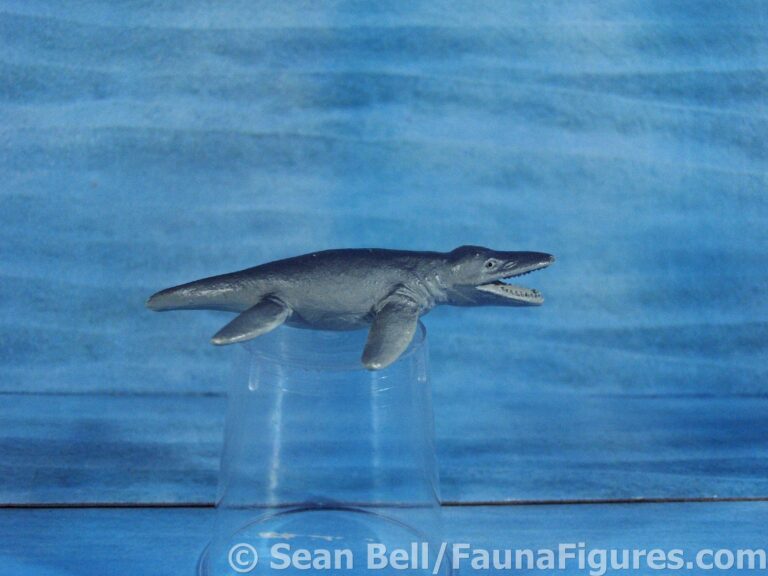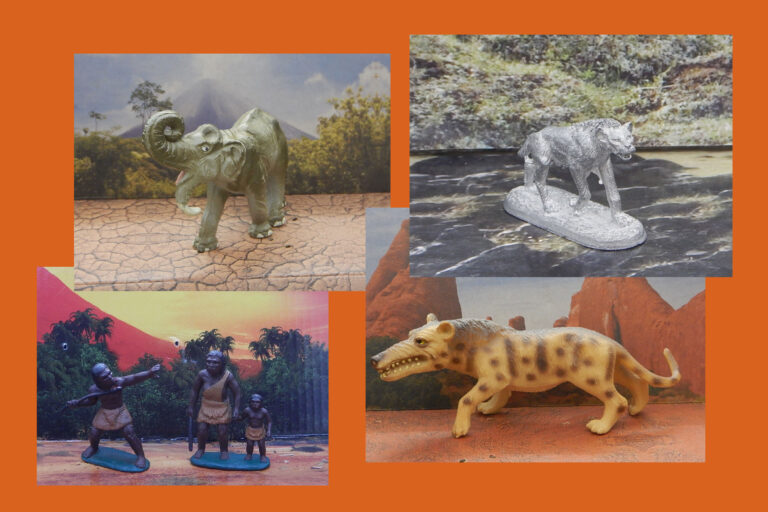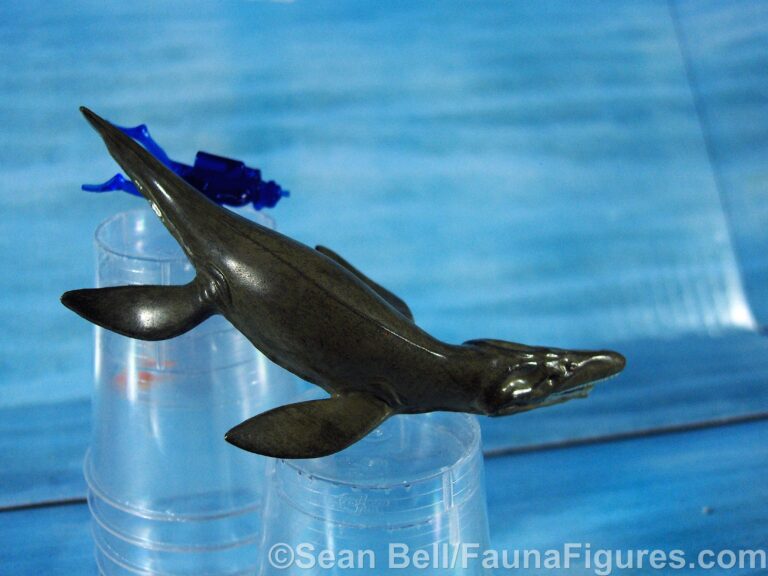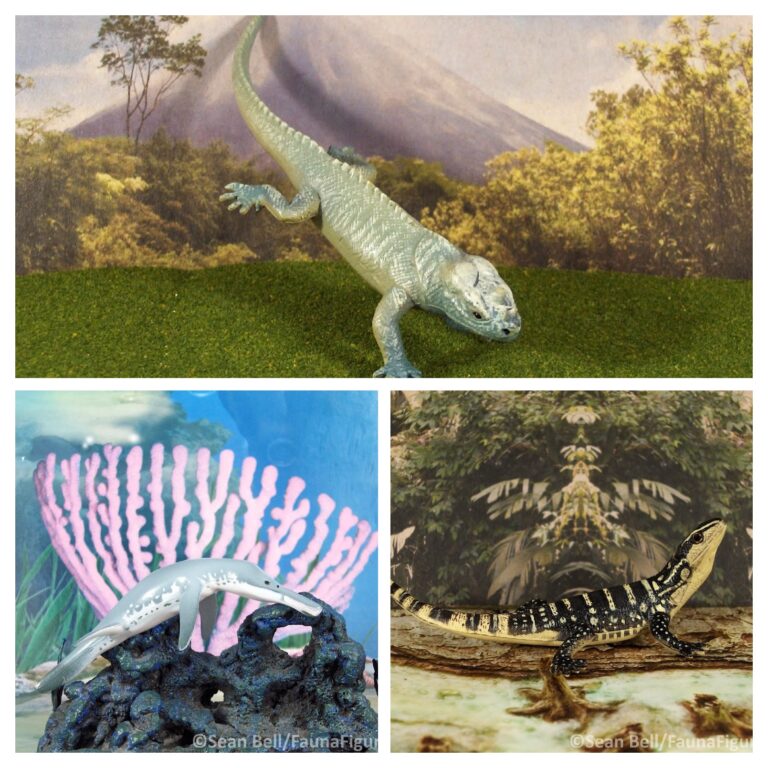Who makes it? French company Starlux. It’s part of their second series, item number FS40095.
When did it come out? This particular model was released in 1981. It seems more vintage than that…the whole line has that same look.

Still available? Unfortunately no, although there were rumours of a revision of the Starlux figures in the early 2000s. But I don’t think that happened.
Where can it be found in my displays? I have an entire shelf full of these classic models–they have a particular style, and a broad range of animals, and it fills a shelf!

How does it fit in the collection? It’s an unusual prehistoric reptile, which is one of those groups that I enjoy collecting. And being a nothosaur, a group that isn’t made very often (less so now…with the end discontinuation of the Safari prehistoric marine reptiles toob). Plus, given how hard they can be to find, there was a bit of a thrill in the chase!
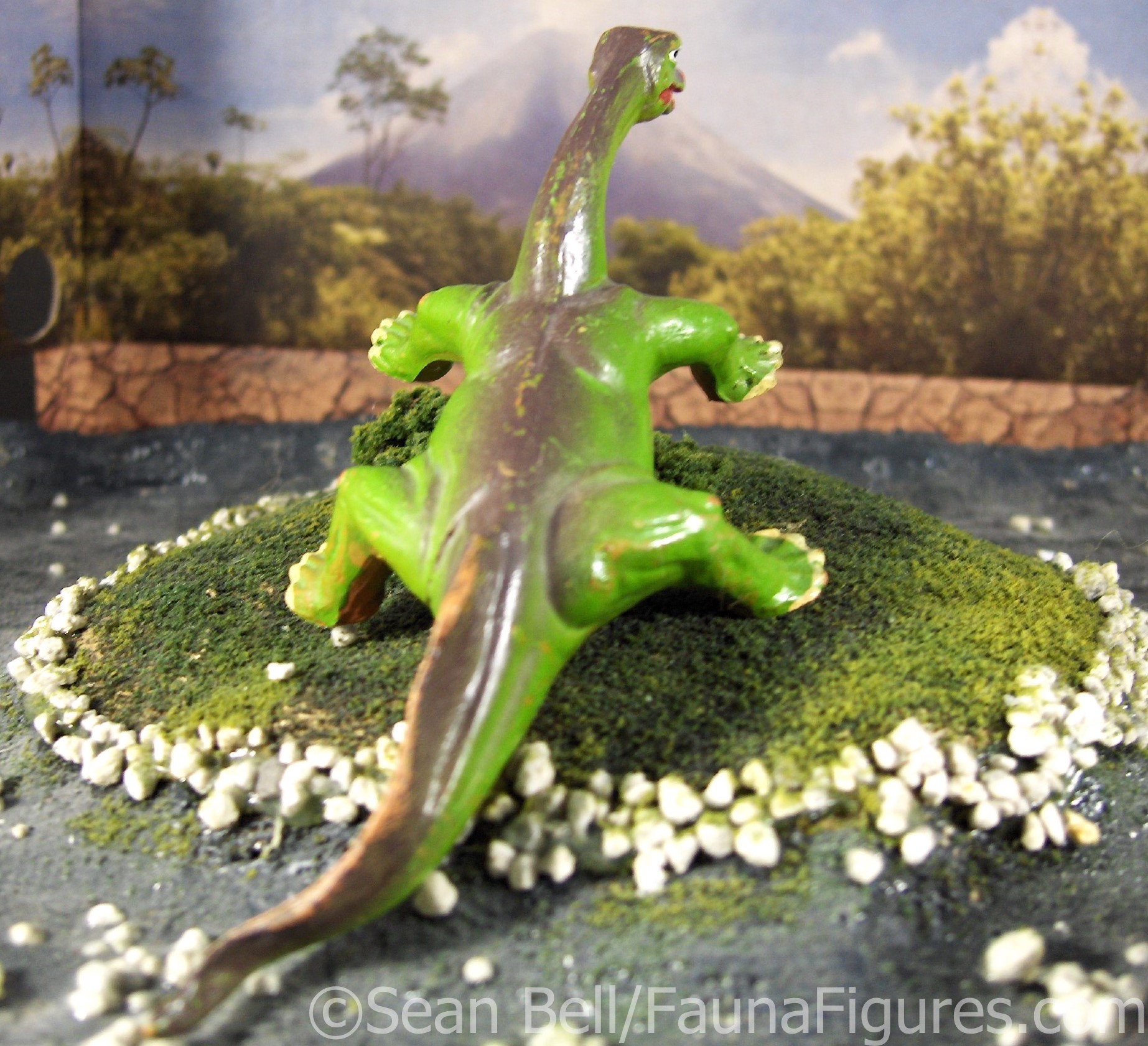
Any story behind it? In the mid-2000s I made a concerted effort to add a large number of Starlux figures to my collection. There is a broad and varied range there, with some really interesting prehistoric mammals, fishes, reptiles and amphibians. And several dinosaurs that didn’t appeal to me. So I began hunting for them–and given that Starlux is primarily from France, the ability to read French really came in handy, because I had to get most of them from Europe! I even got lucky with some large lots, obtaining several models by accident (there’s a brachiopod…a surprisingly pricey brachiopod…and it was an incidental find). This nothosaur, of course, also came from one of those.

Notable remarks about this figure (a review that isn’t really a review): As far as the Starlux Nothosaurus goes, this is the better of the two models. It has a sleeker look, more befitting of an aquatic reptile, which is appropriate. But it is still pretty hefty, with almost elephantine legs and a weird, wide body. It also has a classic Starlux problem with paint details–for many of them, the sculpt is okay to excellent, but especially around the face, the paint is applied in a thick and almost obnoxious way, with heavy red around the mouth and big, weird eyes. The paint is also kind of plain, with a bright green body and grey across the back. The age of these figures also means that the paint is worn in a few places. On the other hand Starlux figures are made of a composite-like material that can often be chipped or broken, but I was lucky enough to have one with no damage to the sculpt.
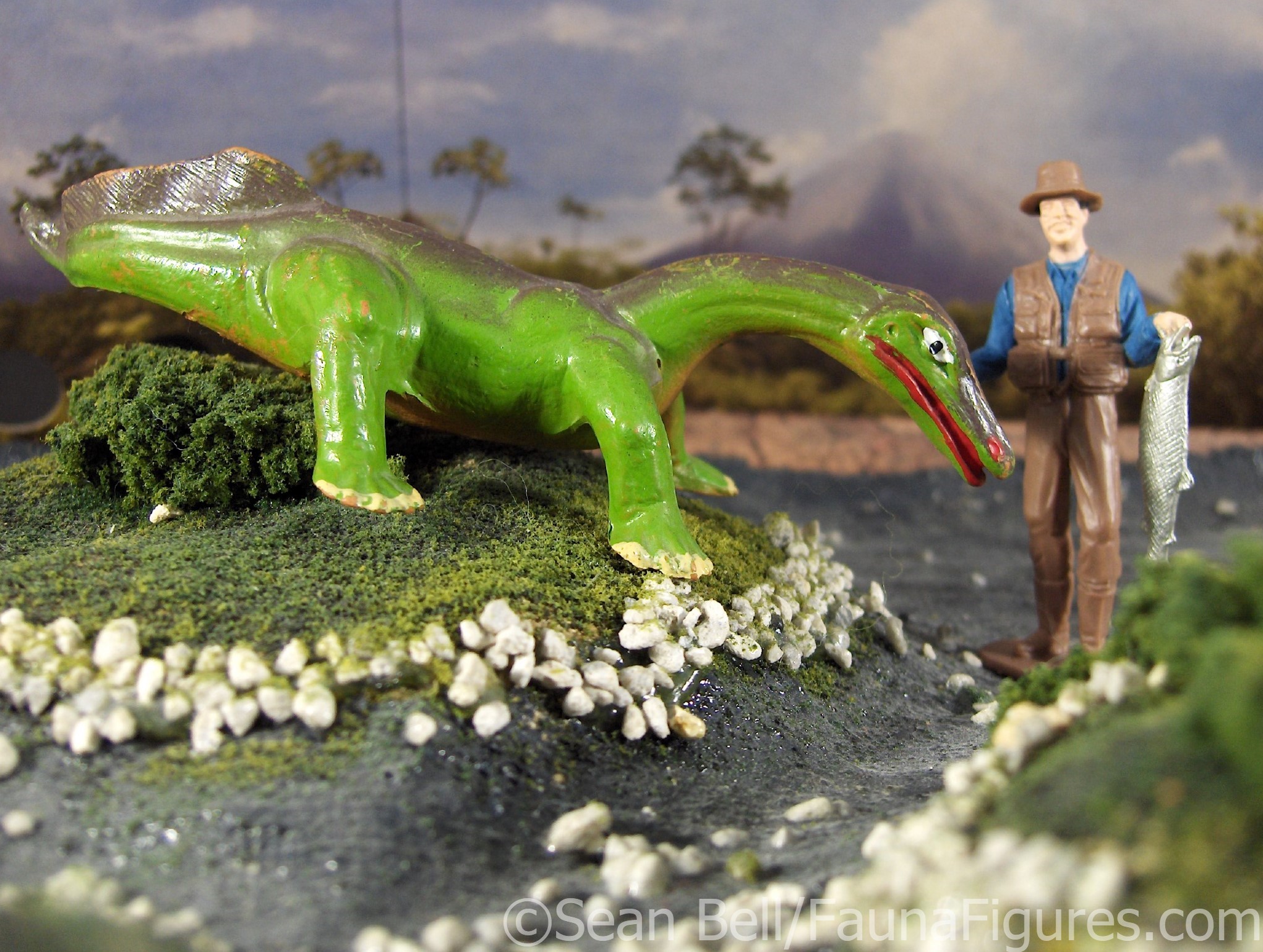
Would I recommend it? I know it is not a very modern figure, and is a little rough and thick. But I have to say, there’s something I really like about the classic style of Starlux models. And this nothosaur is a really great one among them. For fans of prehistoric reptiles, especially non-dinosaurs, I really would recommend this figure. Admittedly, Starlux can be difficult to track down–they are easily broken, and were more common in Europe. Plus, of course, they are from at least the 80s (many are even form the 60s and 70s). But if you can track them down, they are worthy additions. Just be aware, once you start looking for a few it might be hard to stop hunting; the Starlux figures have a wide range and it can be easy to want them all…and even really hard to get them all (especially ones that are not broken).

